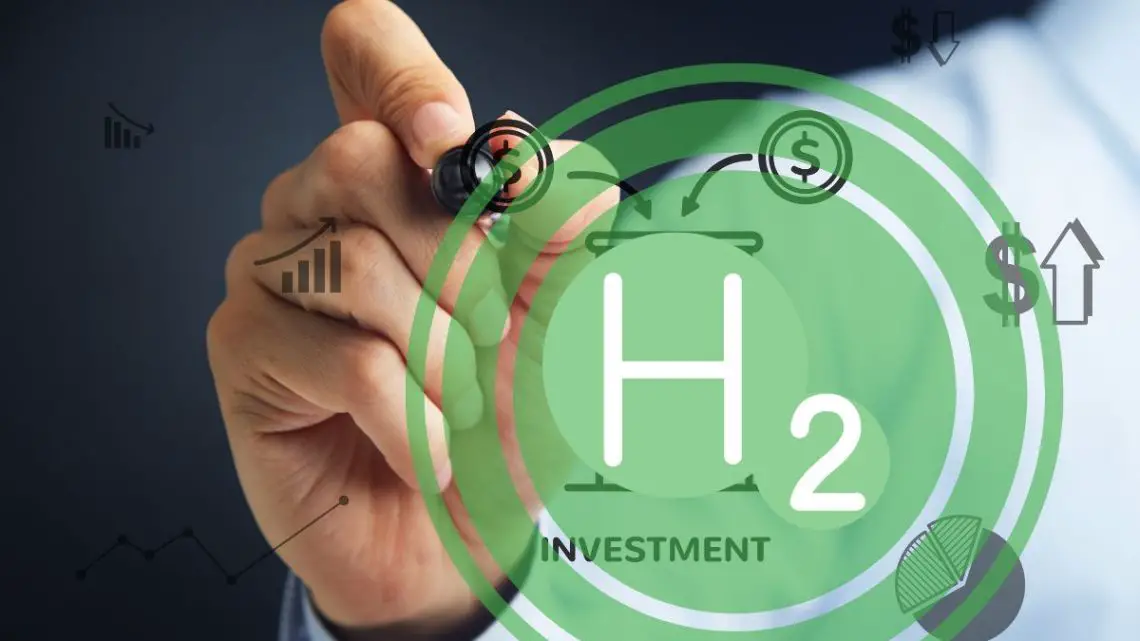
Hydrogen fuel investing requires strategy to combat climate change
July 7, 2022Though this is a carbon emission-free form of energy, its production method decides if it’s clean.
Hydrogen fuel investing has become highly popular among individuals and organizations seeking to clean up their financial portfolios.
The world is decarbonizing and is looking to H2 to do it, but some forms are cleaner than others.
Hydrogen fuel investing can indeed play a role in supporting cleaner companies and the overall battle against climate change. That said, making an environmentally friendly choice has a lot to do with the specific company or project chosen.
To start, limiting hydrogen fuel leaks into the atmosphere will be vital to combatting climate change. Scientists have been cautioning that H2, when leaked into the atmosphere, can contribute to climate change in a way similar to certain other greenhouse gases.

H2 doesn’t trap heat in the same way as CO2. That said, when it leaks, it triggers a number of chemical reactions, which cause warming of the air. Enough leaks of an adequate size have the potential to cause an indirect warming impact comparable to the effect of greenhouse gases. Fortunately, it does cycle out of the atmosphere considerably faster than carbon dioxide. CO2 remains in the atmosphere for centuries, making its impact far more dangerous than H2.
Therefore, strict methods to stop the gas from leaking will need to be put into place to ensure that an H2 economy will remain as green as possible. This will mean that transporting H2 in pipelines made for natural gas could lead to leaks that will harm when they were meant to help.
Hydrogen fuel investing in a green way means focusing on projects that minimize the risk of leaks.
“The potency is a lot stronger than people realize,” said Environmental Defense Fund climate scientist Ilissa Ocko. “We’re putting this on everyone’s radar now not to say ‘no’ to hydrogen but to think about how we deploy it.”
Energy companies that have been looking for a new direction to take as the world works to achieve carbon neutrality have been focusing on hydrogen fuel investing as a new way to keep their top positions in the industry. Governments have been pouring billions into the formation of H2 economies
“Now is when decisions are being made, and money’s being spent,” said Ocko. “We can get ahead of this issue now, so it doesn’t become a problem.”
Ocko is among those spreading the word about the issues relating to hydrogen fuel investing and how not all projects are equally beneficial to the fight against climate change, and that some come with a certain degree of risk.
“There is great potential using hydrogen to save a lot of emissions of carbon dioxide, but it’s really important to keep the hydrogen leakage rates down,” said lead author of a UK H2 study Nicola Warwick, research scientist at the National Centre for Atmospheric Science from the University of Cambridge.
This divide in the benefits of hydrogen fuel investing is known and acknowledged by the H2 industry.
The hydrogen industry is aware of the problem and has acknowledged it, tough companies disagree on the size of the issue relating to H2 and its warming impact. Research has also shown that the smaller and far more temporary nature of the warming reactions make H2 nowhere near as impactful on climate change as CO2.
The other primary issue to be considered in hydrogen fuel investing is in the method of production used by a given project. Green hydrogen uses renewable electricity such as solar and wind energy to power electrolysis to produce H2. That said, that represents only a small fraction of existing projects. Many are blue H2, which uses natural gas with carbon capture and storage. That said, the majority of projects are powered by fossil fuels with unabated greenhouse gas emissions.
Therefore, ensuring that hydrogen fuel investing is clean also depends on the way the H2 is produced and the associated carbon emissions.



 With over 15 years of reporting hydrogen news, we are your premier source for the latest updates and insights in hydrogen and renewable energy.
With over 15 years of reporting hydrogen news, we are your premier source for the latest updates and insights in hydrogen and renewable energy.
Don’t you think we should address the by products of manufacturing H2 and batteries as well as the disposal of their by products and wind and solar products destined for landfill. Technically, this landfill makes solar and wind non-renewable. You will be seeing this with wind turbines going in California landfill now.
It is time that locomotives are changed to Hydrogen and get rid of the filthy diesel fuel. This is my thesis:
Hybrid Locomotive Powered from Hydrogen Fuel Cells for electric locomotives including Slip/Slide control and predictive wheel diameter compensation of each wheel powered by DTC inverters using permanent magnet 3-phase AC traction motors.
A development to assist Climate Change
Proposed PhD thesis by Bernard Schaffler. BSc Eng. MSc Eng. FIEAust. CPEng. MIEEE
But Australia and the railways do not want to listen.